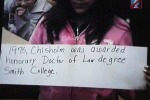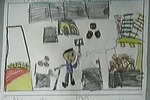Well, the RAP (Read Around the Planet) 2009 season is coming to a close. We still have a few more connections going on over the next few days, but the majority of our connections are now over.
This year we had about 40 RAP connections. This is a slight increase over last year, which I’m excited about. And while I would have to go back and pull records from last year to be positive, I’m pretty sure that the number of schools participating also increased. Which I’m really excited about.
This year we connected with schools from all over the US, Canada and even Costa Rica! Classroom stories, original plays, and book adaptations were shared among the classrooms. In addition, our students learned about other regions of the world from the classrooms they interacted with.
Unfortunately I wasn’t able to watch many of the connections, but one of the ones that I did get to watch was just great. It was a primary level pairing, I think with Kindergarten classes on both sides. I believe the partner school was from Michigan. They did an awesome job of getting our class involved. For each child in our class, they cheered, “Friend, friend from over the way, who has come to play today?” Then they inserted the “friends” name. “Julie, Julie, from over the way. What do you want to play today?” The the student on our side would respond with something all students on both sides would do, jumping jacks, clapping, whatever. All the students seemed to have a great time with this.
I think this would be a fun activity to adapt to incorporate the use of patterns, math problems, spelling words, or just to get to know the other class. 🙂
I can’t wait until next year!















